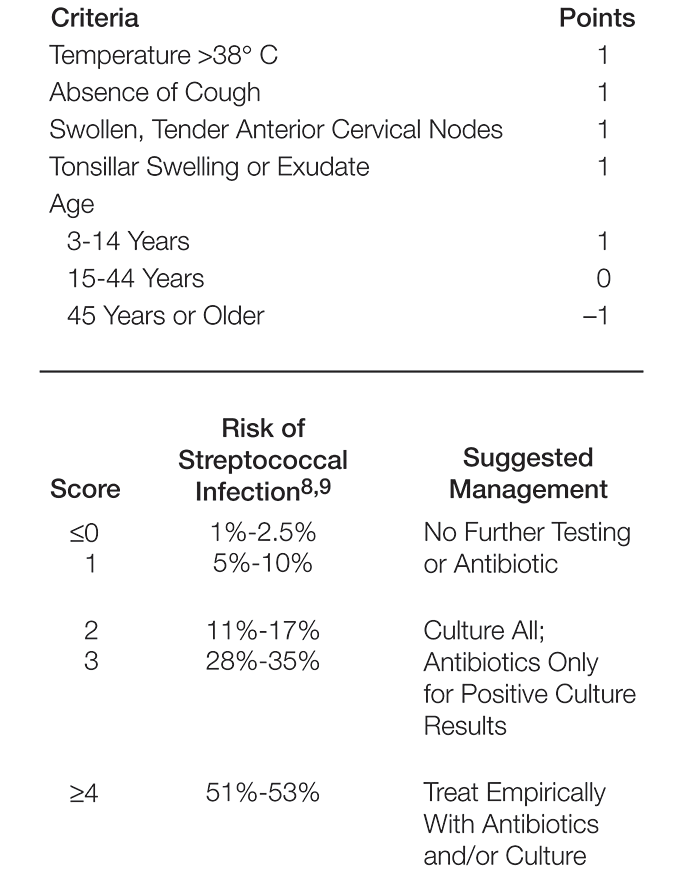
Studies have shown that as many as 70% of patients that present to a doctor with sore throat end up getting antibiotics yet bacterial infection has been found to be the cause of sore throat in only up to about 30% of cases. That means that there is a significant discord between what the true likelihood of a sore throat being strep is and what the common clinical practice is. The wide gap between prescriptions and incidence of bacterial throat infection says that many are prescribing after evaluating a patient in person without bothering to do a throat swab. Or worse yet, they are doing a strep swab which turns out negative, yet they proceed to use antibiotics anyway. So when someone says that trying to diagnose strep throat by a video visit will lead to over-prescribing, I would say to look at what is happening in Family Practice offices, Emergency Departments, and even ENT offices all over the country. It appears that a combination approach of both provider education and patient education is needed to do the right thing.
Now, just because everyone else appears to be over-prescribing is no excuse for similar behavior in telemedicine and its associated negative consequences. So, how do we determine by telemedicine consult what the likelihood is that a patient's complaint of sore throat is likely to be bacterial or not? The answer to that lies in a combination of honest discussion, patient participation, and historical data.
A key component to an appropriate history and physical over video includes honesty. It is imperative that the clinician is honest with themselves and the patient in the limitations of diagnosis over a video chat. But it is just as imperative that the patient is honest in describing the symptoms and their associated history accurately and without ulterior motive in order to get as close as possible to the correct diagnosis and treatment. For example, a patient that specifically wants antibiotics may verbally increase the severity of symptoms and provide a history that they think is needed to secure antibiotics even though only some or none of it is true. This is not a complication of telemedicine per se but is a truthfulness and patient expectation issue. Verbalizing to the patient that you need an honest history to provide the best care to them at least sets an expectation and makes it more likely you will get a better history.
Physicians tend to try to meet expectations when placed upon us. It is part of our nature. Doctors tend to want to make a patient happy and/or better. While the unnecessary antibiotics likely will not make the patients any better, at least in the very short term it tends to make them happy. Decades of physician over-prescribing has created a vicious cycle of patient expectation for prescriptions and physician behavior to fulfill that expectation.

Another component of a good exam is patient participation. Asking the patient to go and get their thermometer to check for fever, having the patient tap their own sinuses, inhale and exhale nasally, show the back of their throat on camera (preferably using a light source), feel for swollen lymph nodes, bend the neck for signs of meningitis, and inhale and exhale deeply to listen for wheezes or rattling mucous are all parts of the physical exam that should be documented. Additional physical exam findings include general appearance, signs of eye irritation, inability to open the mouth all the way suggesting a pus collection near the tonsil, abnormal breathing, and any signs of trauma.
Lastly, we can use historical data to give us a decent sense of the likelihood of the sore throat being strep. When I see a patient with a sore throat, I open up an online version of the Modified Centor Criteria. The Centor criteria have been validated in numerous studies, some of which have looked at upwards of 206,000 patients. The Modified Centor Criteria is essentially a list of findings that can be easily applied to the telemedicine setting. The findings involve the following items: age of the patient, swollen or exudative (coated) tonsils, tender/swollen lymph nodes in the neck, presence or absence of fever, and presence or absence of cough.

As you can see from the above, you will come upon scenarios where you can quite confidently tell the patient that the likelihood that the sore throat is due to strep is extremely low. There will be many where you again need to be honest with yourself and the patient, that it is difficult to tell and the recommendations are to go and get a strep test done. But there will also be that group with a score of 4 or more where you have enough evidence behind you to justify starting antibiotics if you choose to do so. Again, having an honest discussion of the potential of being wrong and the risk of unintended consequences is worth the time. While the criteria are not perfect, using this methodology of practice still would decrease antibiotic prescription rates significantly from the current rates of healthcare providers in practice.
Using the criteria mentioned above, it should be noted that each score level is associated with a range of risk of streptococcal infection. Even a score of zero has an up to 2% risk of it being a strep infection. This requires a little bit of education surrounding the "nothing is perfect" idea. Creating a clear follow-up plan is essential as even a score of 0 or -1 has the potential to still be a bacterial infection, although a small one. In low-risk situations, the risk of problems from the antibiotics actually outweighs the problems from the infection itself. So when we say that we don't think antibiotics are necessary, we are saying that antibiotics are unlikely to help and may actually harm you. But, should you not improve or if you worsen, because a clinician said antibiotics were not needed does not mean you should ignore the symptoms. Getting checked again is worthwhile but for most, using the Center Criteria can save money, time, and side effects when applied appropriately.
At Care on Location, should the healthcare provider feel that you have enough risk of infection to warrant antibiotics, then we can electronically prescribe those medications directly to your preferred pharmacy for pick-up. If the diagnosis of strep is unlikely, we have several other options to help with your symptoms that we can discuss with you.
Care On.